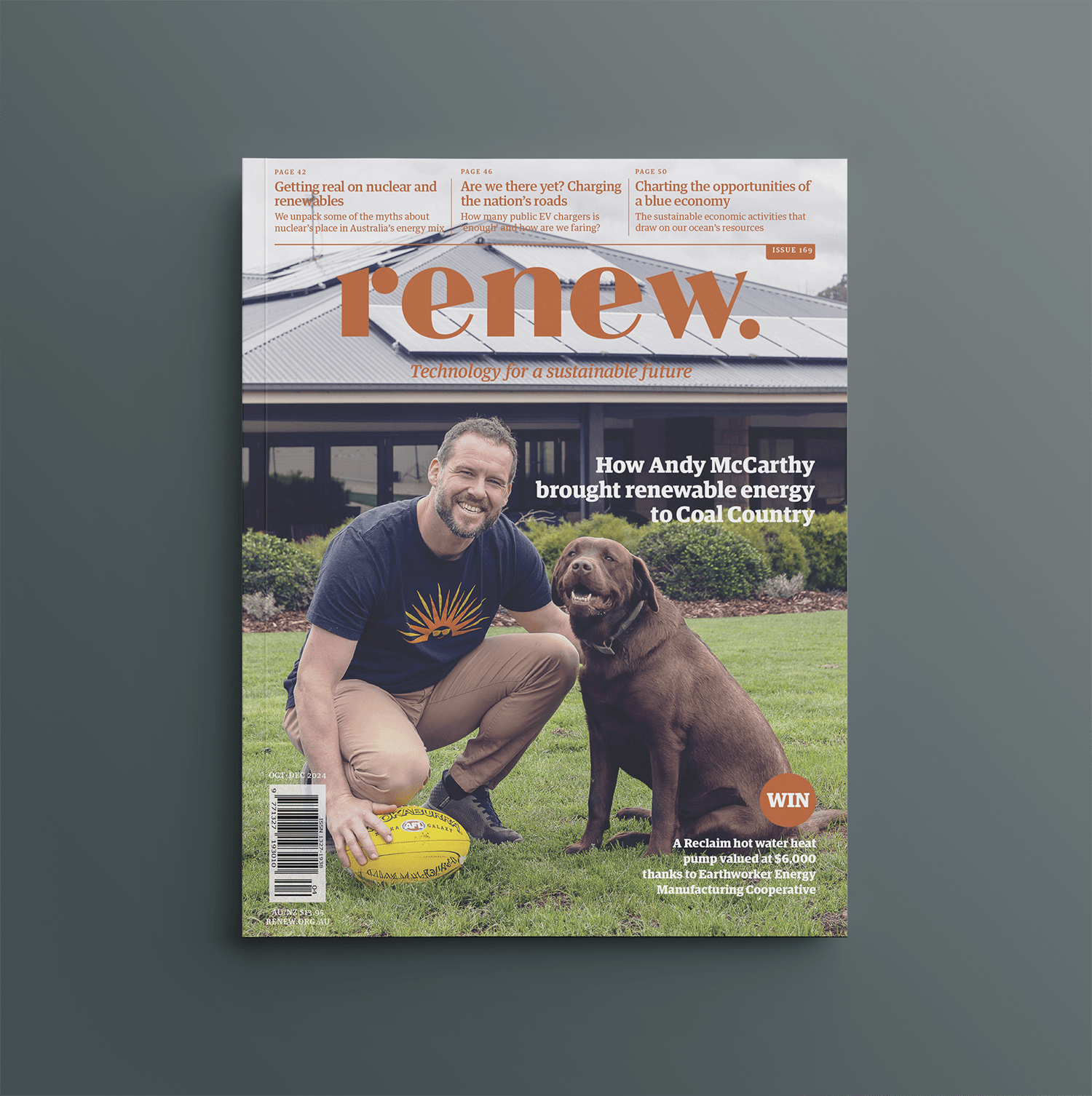The viability of domestic wind turbines
With support from Sustainability Victoria, Renew, formerly the Alternative Technology Association (ATA) spent two years conducting research into the viability of small-scale wind turbines in urban areas. The research occurred in two stages: the first was a desktop study into issues that the emerging market for this technology may face, including turbine performance, planning and grid-connection. In the second stage Renew measured the wind regimes at 10 sites within 25 kilometres of Melbourne’s CBD.
Stage 1: The Viability of Domestic Wind Turbines for Urban Melbourne
This desktop study investigated the feasibility of small-scale, grid-connected wind turbines for urban Melbourne, outlined the findings of the research and highlighted the issues the emerging market may face.
The Stage 1 report launched in November 2007 concluded that:
- The urban environment is too complex to model with any accuracy; therefore the use of anemometers would be advised to check the wind resource at any potential site
- Urban turbines have performed poorly overseas and payback periods are likely to be long
- Bird strike and electromagnetic interference are unlikely to be significant
- At the time of the study, relatively few turbines were available on the Australian market and nearly all of these are horizontal axis machines
- Turbines were still expensive, with installation and grid connection costs adding around $10,000 to the cost of the turbine.
Due to the inherent limitations of a desktop study, some issues would greatly benefit from a field trial to provide further clarification. These include:
- Specific local urban wind regimes
- Technical performance of turbines and accuracy of manufacturer power curves
- Noise output
- Planning issues, for example height and noise restrictions and the ability of councils to process applications on a case by case basis
- Grid connection issues particularly the negotiation of a retailer contract for the sale of excess electricity
- Community acceptance of domestic wind turbines.
Stage 2: Victorian Urban Wind Resource Assessment
This report released in June 2009 looked at typical wind regimes at 10 sites within 25 kilometres of Melbourne’s CBD and commented on the suitability of urban locations for installation of micro wind turbines (MWT).
This research indicated that of the 10 sites under consideration, only two were likely to be suitable for MWT installation. One of the sites was situated in a broad open area on the seashore in Williamstown, and the other was on top of a large commercial building in Melbourne’s CBD. Levels of turbulence were found to be much greater at the CBD location. Neither of these sites could be described as a typical domestic location. The gathered data suggests that common domestic sites are not likely to have sufficient available wind energy to make MWT use an attractive option.
It is recommended that further research in this area concentrate on establishing standards for measuring turbulence in urban environments, modelling the effects of turbulence parameters on MWT performance and verifying the accuracy of derived Weibull curves and manufacturer power curves in predicting MWT performance.
Read the Stage 1 report: The Viability of Domestic Wind Turbines for Urban Melbourne
Read the Stage 1 report appendices: The Viability of Domestic Wind Turbines for Urban Melbourne
Read the Stage 2 report: Victorian Urban Wind Resource Assessment

